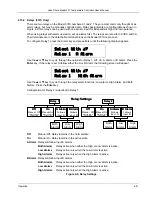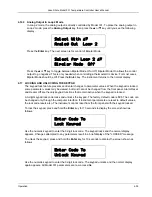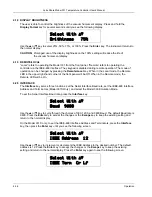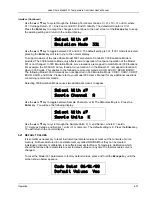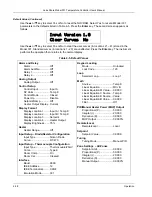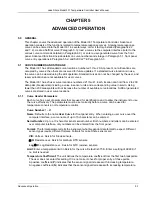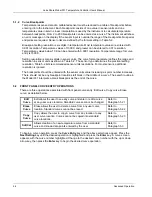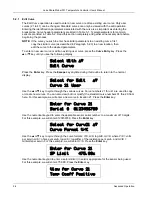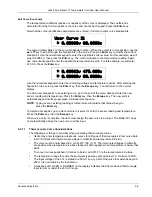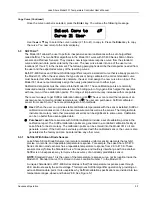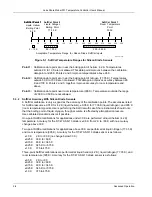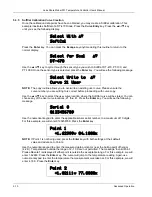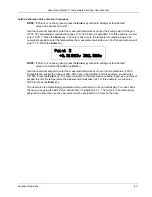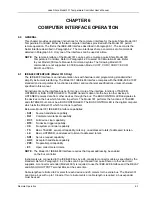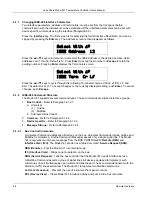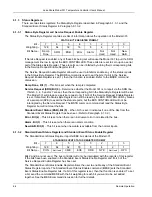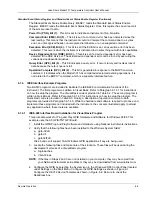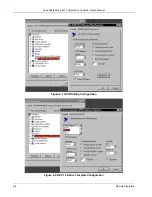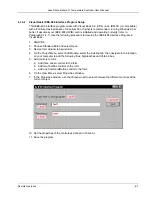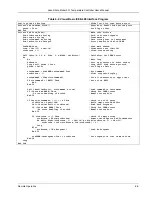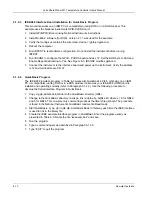
Lake Shore Model 331 Temperature Controller User’s Manual
Copy Curve (Continued)
Once the curve number is selected, press the
Enter
key. You will see the following message.
Select Copy to °®
Curve 21 User
Use the
s
or
t
key to select the curve number (21 thru 41) to copy to. Press the
Enter
key to copy
the curve. You now return to the normal display.
5.3 SOFTCAL™
The Model 331 allows the user to perform inexpensive sensor calibrations with a set of algorithms
called SoftCal. The two SoftCal algorithms in the Model 331 work with DT-400 Series Silicon Diode
sensors and Platinum Sensors. They create a new temperature response curve from the standard
curve and known data points entered by the user. The new curve loads into one of the user curve
locations (21 thru 41) in the instrument. The following paragraphs describe the data points needed from
the user and the expected accuracy of the resulting curves.
Both DT-400 Series and Platinum SoftCal algorithms require a standard curve that is already present in
the Model 331. When the user enters the type of sensor being calibrated, the correct standard curve
must be selected. When calibration is complete, the user must assign the new curve to an input. The
Model 331 does not automatically assign the newly generated curve to either input.
Calibration data points must be entered into the Model 331. These calibration points are normally
measured at easily obtained temperatures like the boiling point of cryogens. Each algorithm operates
with one, two, or three calibration points. The range of improved accuracy increases with more points.
There are two ways to get SoftCal calibration data points: The user can record the response of an
unknown sensor at well controlled temperatures, or The user can purchase a SoftCal calibrated
sensor from Lake Shore. There are advantages to both methods.
User:
When the user can provide stable calibration temperatures with the sensor installed, SoftCal
calibration eliminates errors in the sensor measurement as well as the sensor. Thermal gradients,
instrument accuracy, and other measurement errors can be significant to some users. Calibration
can be no better than user-supplied data.
Purchased:
Lake Shore sensors with SoftCal calibration include a set of calibration points in the
calibration report. The SoftCal calibration points are generated in a controlled calibration facility at
Lake Shore for best accuracy. The calibration points can be entered into the Model 331 so it can
generate a curve. If the CalCurve service is purchased with the calibrated sensor, the curve is also
generated at the factory and can be entered like any other curve.
5.3.1
SoftCal With Silicon Diode Sensors
Lake Shore Silicon Diode Sensors incorporate remarkably uniform sensing elements that exhibit
precise, monotonic, and repeatable temperature response. For example, the Lake Shore DT-470
Series of silicon diode sensors has a repeatable temperature response from 2 K to 475 K. These
sensors closely follow the Standard Curve 10 response and routinely interchange with one another.
SoftCal is an inexpensive way to improve the accuracy of an already predictable sensor.
NOTE:
Standard Curve 10 is the name of the temperature response curve, not its location inside the
Model 331. Standard Curve 10 is stored in Curve Location Number 1 in the Model 331.
A unique characteristic of DT-400 Series diodes is that their temperature responses pass through
28 K at almost exactly the same voltage. This improves SoftCal algorithm operation by providing an
extra calibration data point. It also explains why SoftCal calibration specifications are divided into two
temperature ranges, above and below 28 K. See Figure 5-1.
Advanced Operation
5-7

